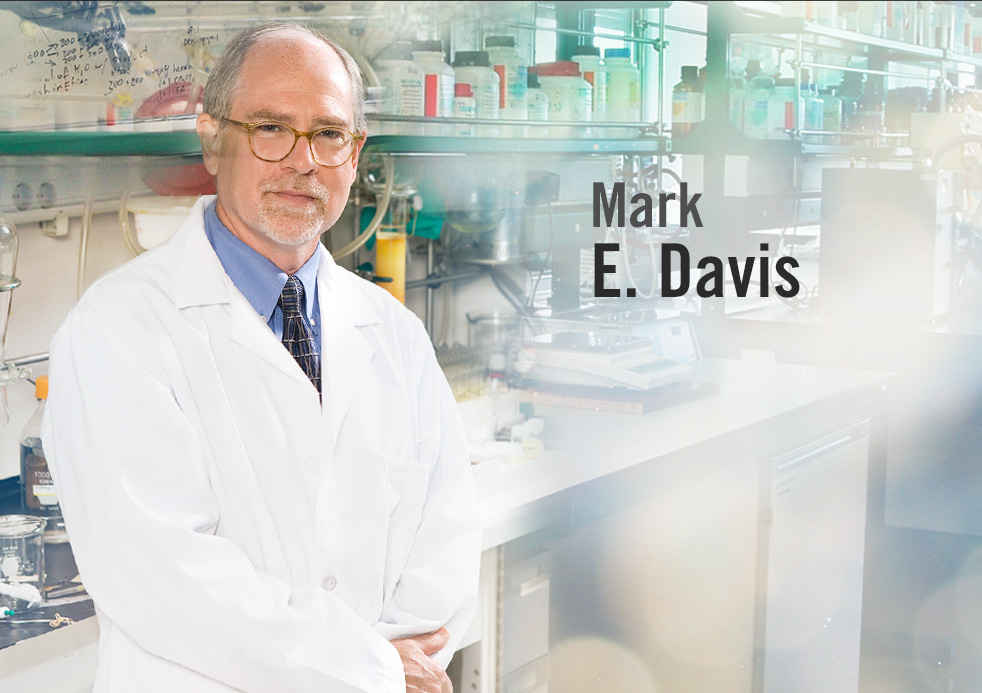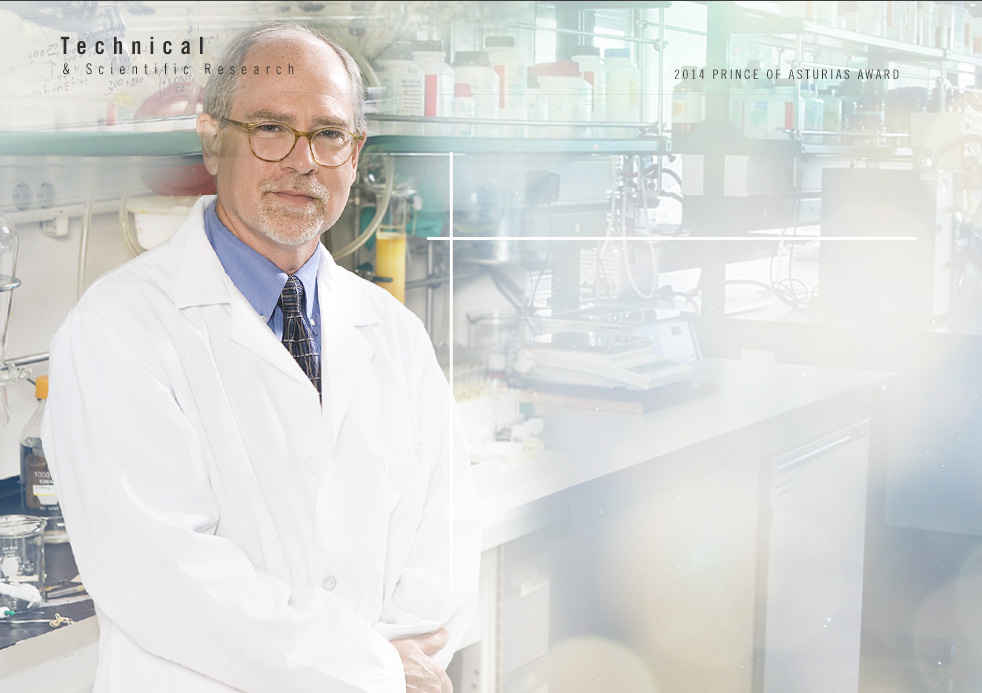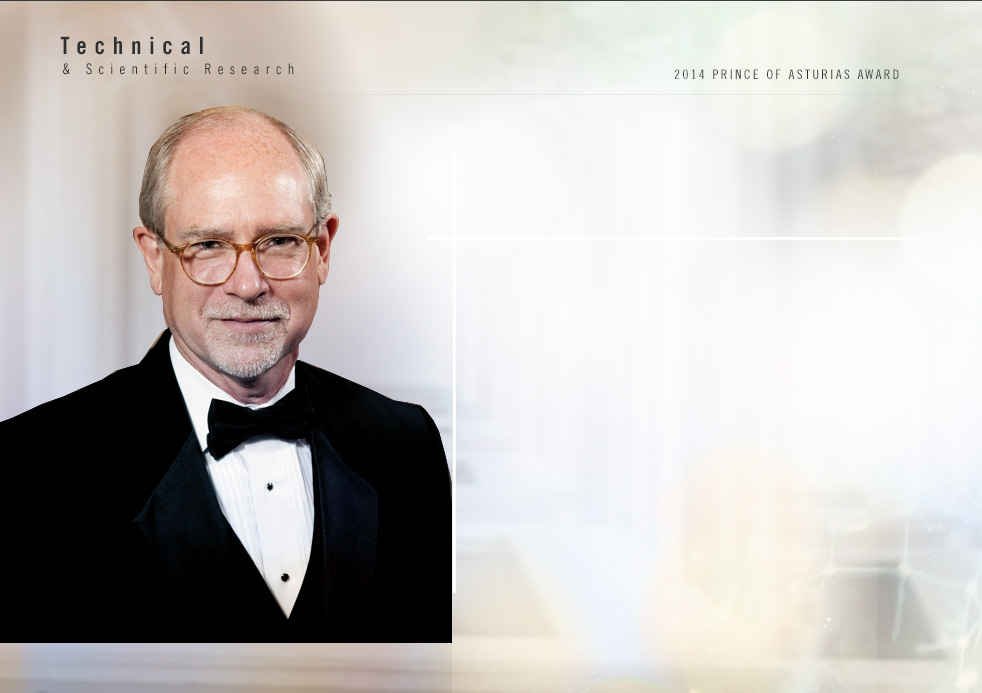
- Biographyver
- Recognitionver
- Prince of Asturias Awardver

BiographyMark E.Davis
Mark E. Davis (Ellwood City, Pennsylvania, USA, 1955) studied Chemical Engineering at the University of Kentucky, where he received his PhD in 1981. Between 1981 and 1990, he lectured at Virginia Polytechnic and State University and, in 1991, after a year as a visiting professor at Stanford, began working at the California Institute of Technology (Caltech), where he is currently the Warren and Katharine Schlinger Professor of Chemical Engineering. Since 2004, he has also been a member of the Experimental Therapeutics Program at the City of Hope Comprehensive Cancer Center.
Davis began working in the field of zeolites in Virginia. During the 1980s and 90s, he started up many programs on the synthesis of materials and created new classes of catalysts and molecular sieves. One of the great successes of his research group was to expand the standard pore size of zeolite, which varied from 0.2 to 0.8 nanometres, to more than 1 nanometre. Davis' group also created a technique called supported aqueous phase catalysis, which can be used for the solid-supported synthesis of chiral drugs, of major use in the pharmaceutical industry. At Caltech, Davis has been working on a synthetic material that can mimic the ability of enzymes to orchestrate what chemists call a cooperative acid-base reaction. He also started research in the field of biomaterials and, shortly after, his wife was diagnosed with breast cancer, which led to Davis to focus his efforts on finding new ways to manage cancer therapies more specifically after seeing the effects of chemotherapy.
His achieved his early successes loading cyclodextrin-based nanoparticles with the anticancer agent camptothecin and injecting the compound into groups of mice with various types of cancer. The experiment worked, as the cyclodextrin protected the drug from the slightly alkaline environment of the animals' blood preventing it from being excreted. This therapy is currently in Phase I of clinical trials.

RecognitionMark E.Davis
Author of numerous scientific articles, Davis sits on the editorial board of Molecular Therapy-Nucleic Acids, Drug Delivery and Translational Research, Proceedings of the National Academy of Science and Nucleic Acid Therapeutics, among other publications.
He is a member of the American Institute of Chemical Engineers, the American Chemical Society, the American Association for Cancer Research, the National Academy of Engineering and the National Academy of Sciences. Davis has been distinguished with the Presidential Young Investigator Award (1985), the Donald Breck Award from the International Zeolite Association (1989), the Alan T. Waterman Award (being the first engineer to receive this award), the National Science Foundation Award (1990), the Elmer Gaden Award from the American Chemical Society (2009) and the Gabor A. Somorjai Award for Creative Research in Catalysis (2014), among others.
On the occasion of its centennial in 2008, the American Institute of Chemical Engineers included him in its list of "One Hundred Engineers of the Modern Era".

Prince of Asturias AwardMark E.Davis
At its meeting in Oviedo, the Jury for the 2014 Prince of Asturias Award for Technical and Scientific Research, made up of Juan Luis Arsuaga Ferreras, Juan Ignacio Cirac Sasturáin, Luis Fernández-Vega Sanz, Cristina Garmendia Mendizábal, María del Rosario Heras Celemín, Bernardo Hernández González, José Manuel Leceta García, Emilio Lora-Tamayo D'ocón, José Antonio Martínez Álvarez, Amador Menéndez Velázquez, María Teresa Miras Portugal, Ginés Morata Pérez, Enrique Moreno González, César Nombela Cano, Eduardo Punset Casals, Marta Sanz-Solé, Manuel Toharia Cortés, chaired by Pedro Miguel Echenique Landiríbar and with Vicente Gotor Santamaría acting as secretary, has decided to bestow the 2014 Prince of Asturias Award for Technical and Scientific Research on the chemist Avelino Corma Canás (Spain), the chemical engineer Mark E. Davis (USA) and the physical chemist Galen D. Stucky (USA) for their contributions to the development of microporous and mesoporous materials and their applications.
The three researchers have made truly remarkable contributions to the design and methods of synthesis of these materials, the study of their properties and the development of their applications in very diverse fields. These include the petrochemical industry, biodegradable plastics and water treatment, improved food quality, new medicines and revolutionary healthcare materials, optoelectronic materials, emission reducing elements and, in short, a broad range of activities in society.
Oviedo, 28th May 2014